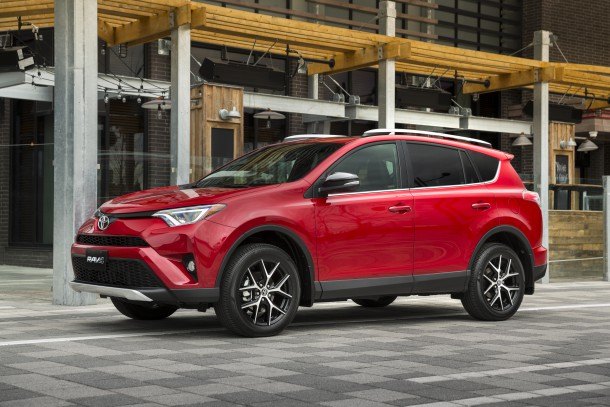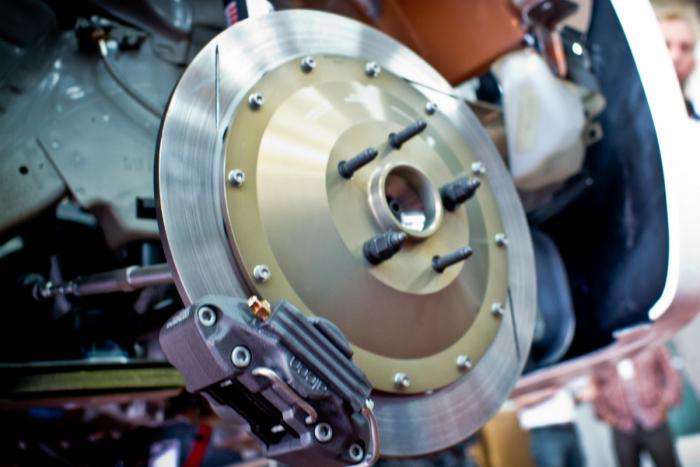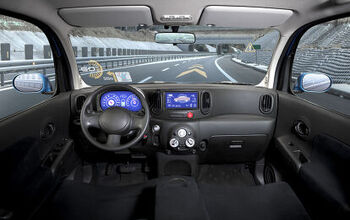TTAC News Round-up: Toyota One-Ups Rivals, Robots Invade BMW, and TVR Taps Wales

Toyotas will soon be screeching to a halt everywhere and that should make its rivals jealous.
That, BMW unleashes the robots on the workers, eccentric automaker picks a place with funny-sounding names, General Motors isn’t falling out of love with China, and Mercedes-Maybach to get a rival … after the break!
My dad’s car can stop sooner than your dad’s car
Stopping is the new going fast, and Toyota wants its cars to do a lot of the former.
The automaker has announced that almost all of its vehicles will adopt automatic emergency braking next year, almost five years ahead of a deadline voluntarily set by a group of automakers last week.
The safety system will be in place in almost all Toyota and Lexus vehicles by the end of 2017, the automaker announced yesterday prior to the New York Auto Show.
“High-level driver assist technologies can do more than help protect people in the event of a crash; they can help prevent some crashes from ever happening in the first place,” stated Jim Lentz, CEO of Toyota Motor North America.
“We are proud to help lead this industry in standardizing these systems and bring automated braking to our customers sooner rather than later.”
The day following the braking agreement, Volvo made it known that it has included the system on its vehicles for the past two years. Ouch.
Automatic for the people
BMW expects a fleet of small robots to cut the cost of building a car by five percent.
The automaker has unleashed a swarm of small, trolley-pushing robots into its German logistics facility to speed up the flow of inventory, Bloomberg reports:
The German manufacturer plans to roll out the automated trolleys, which BMW makes in-house, to other warehouses after a six-month trial. The program is part of a broader effort to squeeze out several hundred million euros in costs in the coming years to fund the development of self-driving features and other technologies for its cars, investments that may not pay off for years.
Speeding up the way parts are moved around a production facility was one of the last ways BMW could squeeze efficiencies out of its manufacturing process.
TVR has new digs
Wales, which has a hamlet named Llanfihangel-yng-Ngwynfa, will play host to a new factory for eccentric automaker TVR.
The independent British sports car maker, which keeps its fans continuously guessing about what the future holds, will employ 150 workers in Ebbw Vale to build a new TVR model, reports The Guardian:
The TVR investment is expected to create 150 jobs in an area due to be transformed by the building of the £315m Circuit of Wales project, which includes a racetrack and a motor sports centre of excellence …
The current management team acquired the brand in 2013 and has been looking for a base in which to build a new version of the car.
Orders have been strong for TVR’s newest vehicle, which will begin production next year. Within five years, TVR hopes to be able to produce 2,000 vehicles annually.
GM has high hopes in the Orient
Chinese growth might be slowing, but General Motors is betting that the emerging vehicle market will rebound.
The automaker is sticking with earlier plans to invest in the country and expand its lineup, according to Reuters:
While GM continues to bet on the growth of the Chinese market, consultancy JD Power has said that three or more years of less than 5 percent growth would trigger a painful restructuring in China’s auto sector.
Analysts say China’s auto market has entered a period of unprecedented uncertainty as the economy grows at its slowest pace in 25 years.
“Even though the China market is maturing, it will still be a tremendous source of growth for us in both the short term and the long term,” GM President Dan Ammann told a media conference on Monday.
GM’s plan is to introduce 60 new or refreshed vehicles in the Chinese market in the next five years. A second phase is being added to the company’s Wuhan plant to double capacity.
Conspicuous wealth creeps up in the rearview
The Mercedes-Maybach S600 is the pinnacle of German luxury motoring, but that crown could soon be wrestled away by its chief rival.
BMW has confirmed it will build an ultra-luxury vehicle designed to dethrone Mercedes from its perch at the top end of the market, according to Automotive News:
“Just like certain competitors, we will see that we occupy with credible offers the price bracket of 150,000 euros ($170,000) and beyond,” BMW development chief Klaus Froehlich said last week.
While BMW is attracted by the more lucrative margins that Mercedes earns on the Maybach versus its base S-class sedan, its future car would have to drive like a quintessential BMW.
Froehlich suggests the looming super-sedan won’t be based on an existing vehicle platform, as the Mercedes-Maybach is.
“Some simply do 4 or 5 wheelbases [in length] and add varyingly thick chrome packages,” he said. “That will not be the BMW approach.”

More by Steph Willems
Latest Car Reviews
Read moreLatest Product Reviews
Read moreRecent Comments
- Master Baiter I told my wife that rather than buying my 13YO son a car when he turns 16, we'd be better off just having him take Lyft everywhere he needs to go. She laughed off the idea, but between the cost of insurance and an extra vehicle, I'd wager that Lyft would be a cheaper option, and safer for the kid as well.
- Master Baiter Toyota and Honda have sufficient brand equity and manufacturing expertise that they could switch to producing EVs if and when they determine it's necessary based on market realities. If you know how to build cars, then designing one around an EV drive train is trivial for a company the size of Toyota or Honda. By waiting it out, these companies can take advantage of supply chains being developed around batteries and electric motors, while avoiding short term losses like Ford is experiencing. Regarding hybrids, personally I don't do enough city driving to warrant the expense and complexity of a system essentially designed to recover braking energy.
- Urlik You missed the point. The Feds haven’t changed child labor laws so it is still illegal under Federal law. No state has changed their law so that it goes against a Federal child labor hazardous order like working in a slaughter house either.
- Plaincraig 1975 Mercury Cougar with the 460 four barrel. My dad bought it new and removed all the pollution control stuff and did a lot of upgrades to the engine (450hp). I got to use it from 1986 to 1991 when I got my Eclipse GSX. The payments and insurance for a 3000GT were going to be too much. No tickets no accidents so far in my many years and miles.My sister learned on a 76 LTD with the 350 two barrel then a Ford Escort but she has tickets (speeding but she has contacts so they get dismissed or fine and no points) and accidents (none her fault)
- Namesakeone If I were the parent of a teenage daughter, I would want her in an H1 Hummer. It would be big enough to protect her in a crash, too big for her to afford the fuel (and thus keep her home), big enough to intimidate her in a parallel-parking situation (and thus keep her home), and the transmission tunnel would prevent backseat sex.If I were the parent of a teenage son, I would want him to have, for his first wheeled transportation...a ride-on lawnmower. For obvious reasons.







































Comments
Join the conversation
I'm pretty sure Toyota's dead line will be the chalk marks drawn around your Toyota and body.
TVR's Speed Six (4.0L NA inline-6, 350+hp) is maybe my third-favorite I6 engine. Hopefully during their time off they figured out how to make one that doesn't need a complete overhaul at intervals that would make an coachbuilt Italian supercar look reliable.